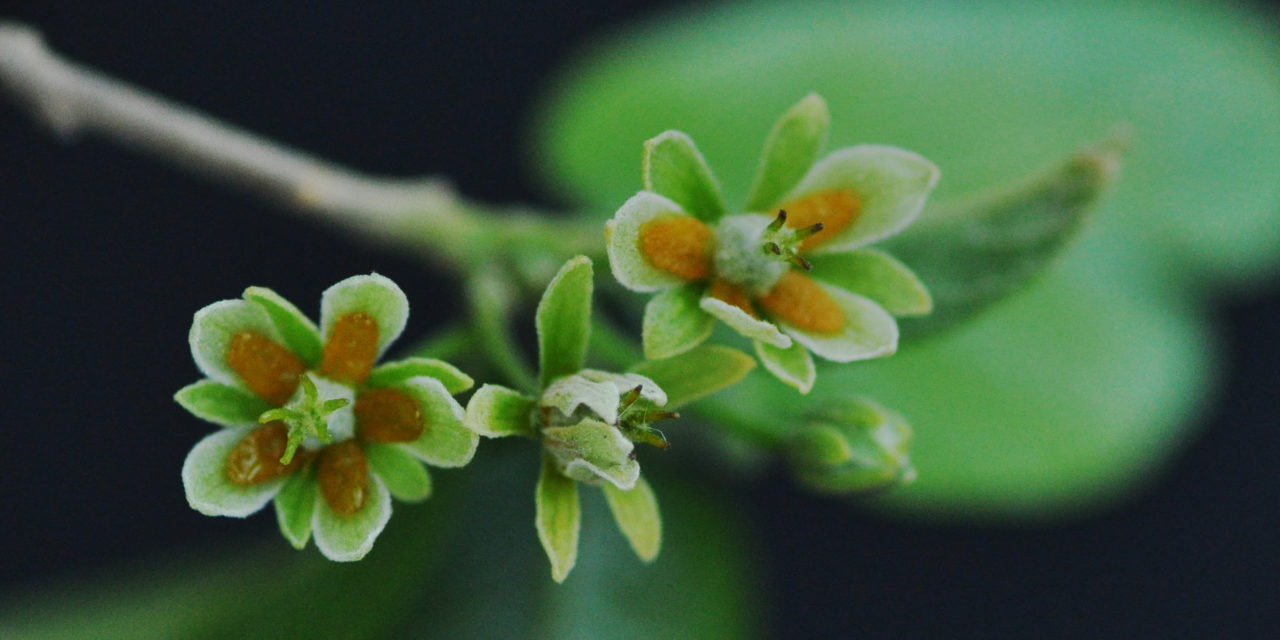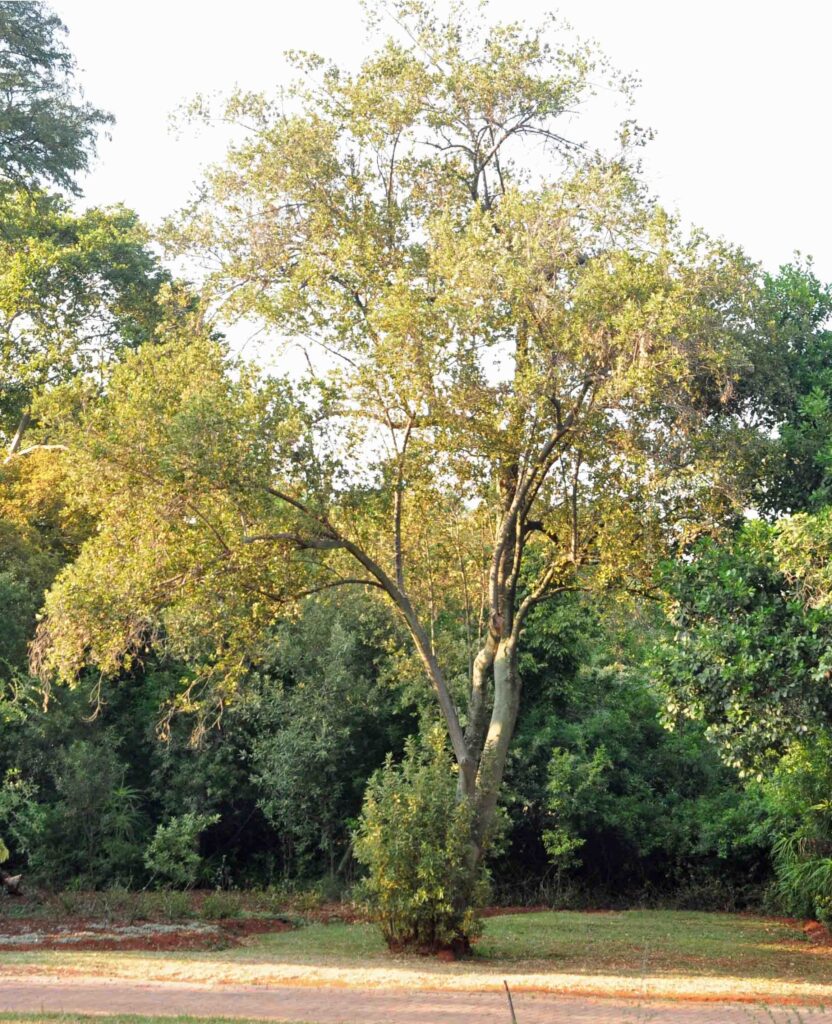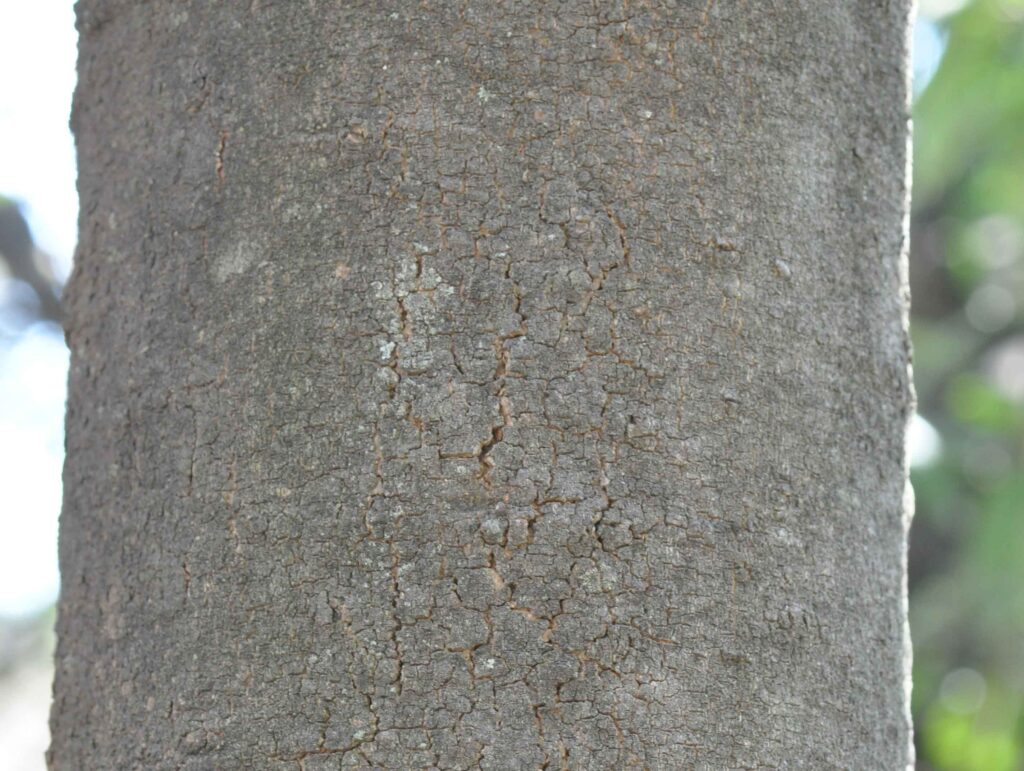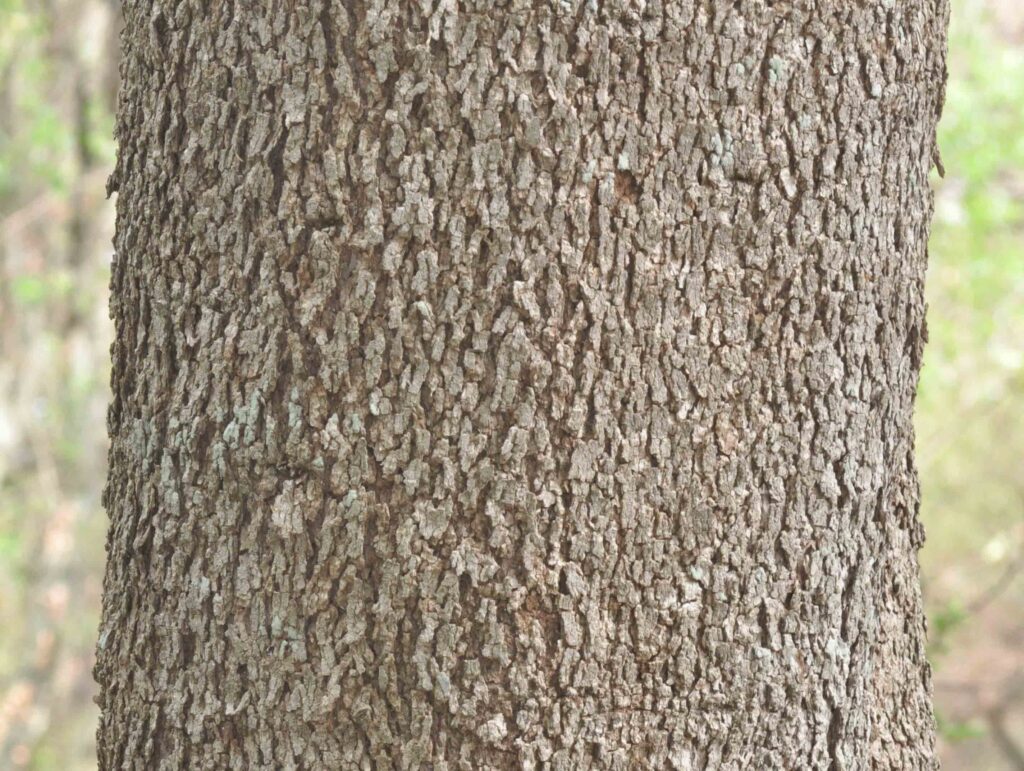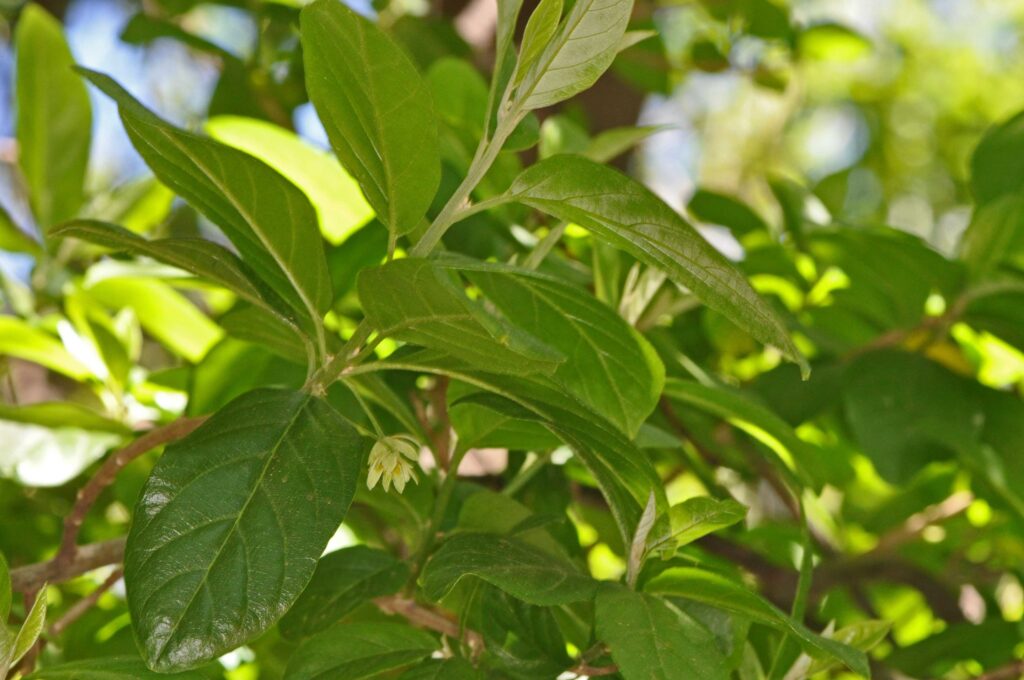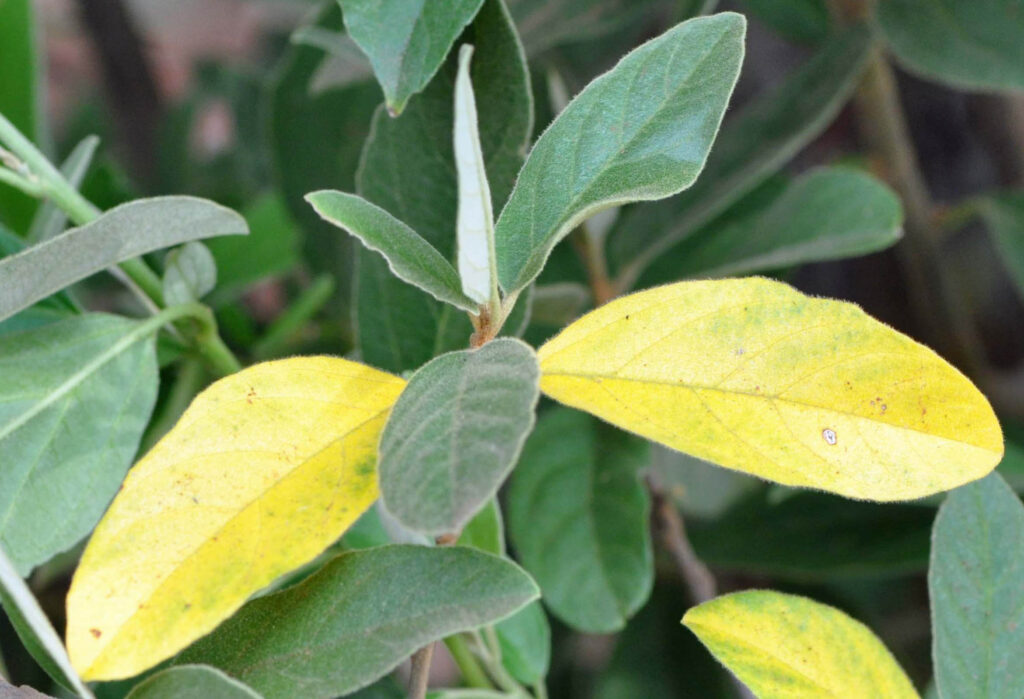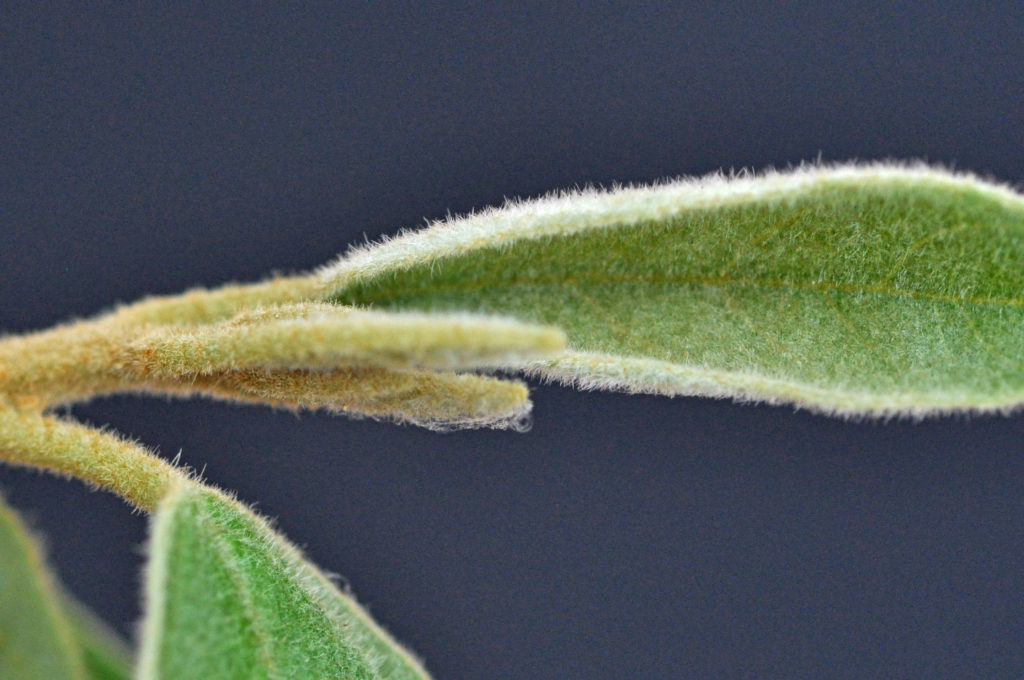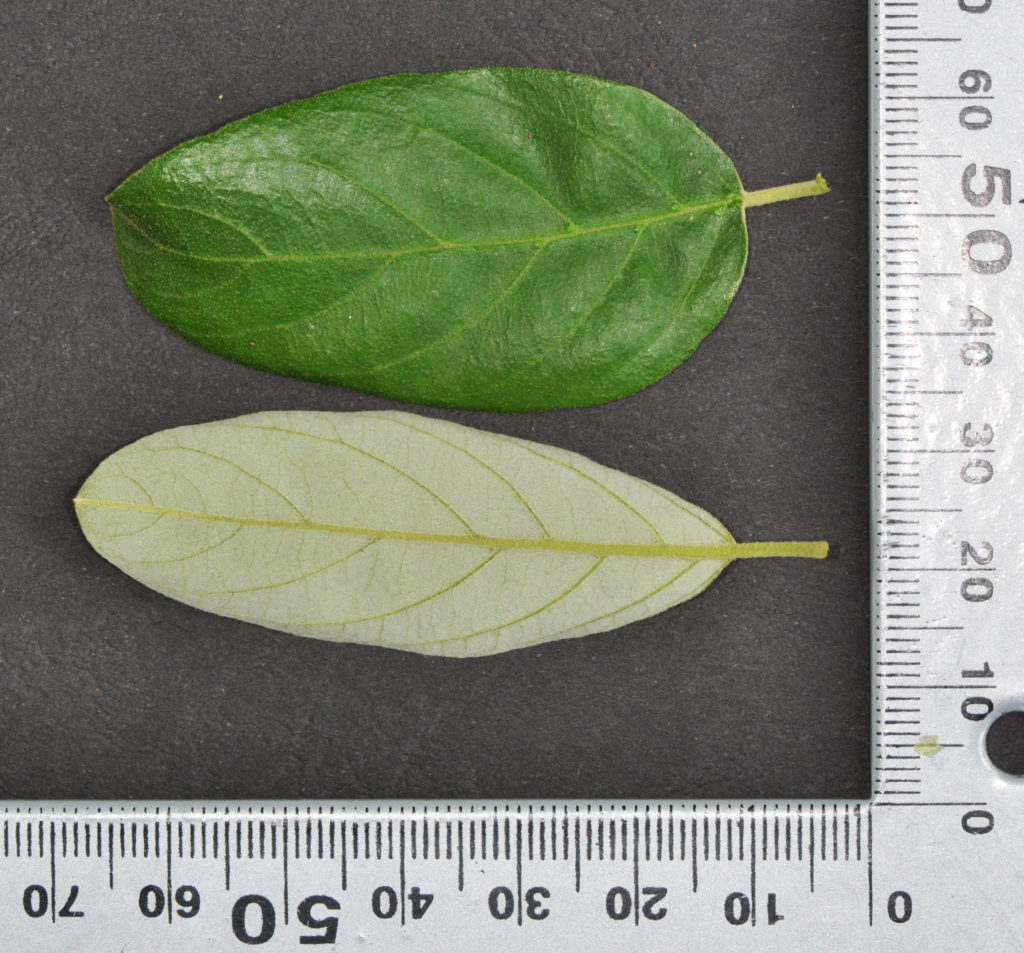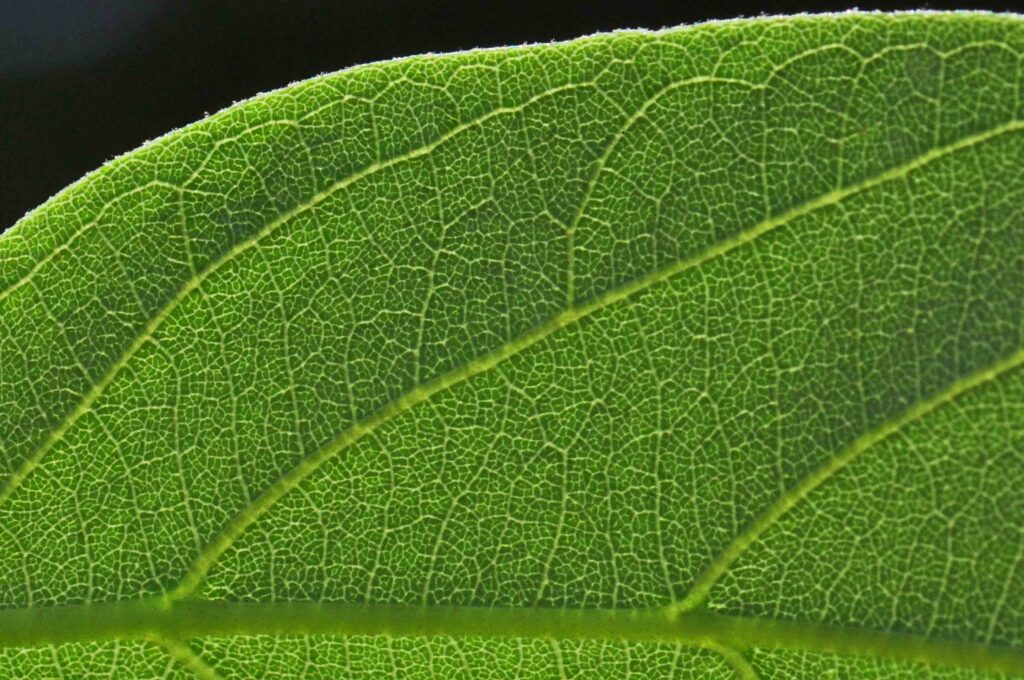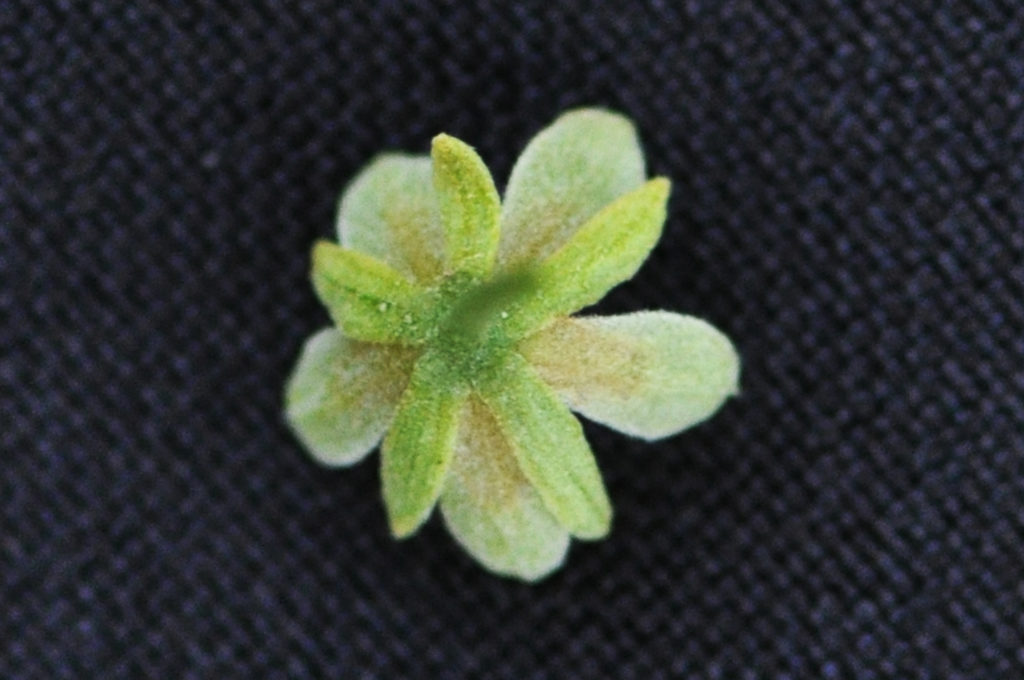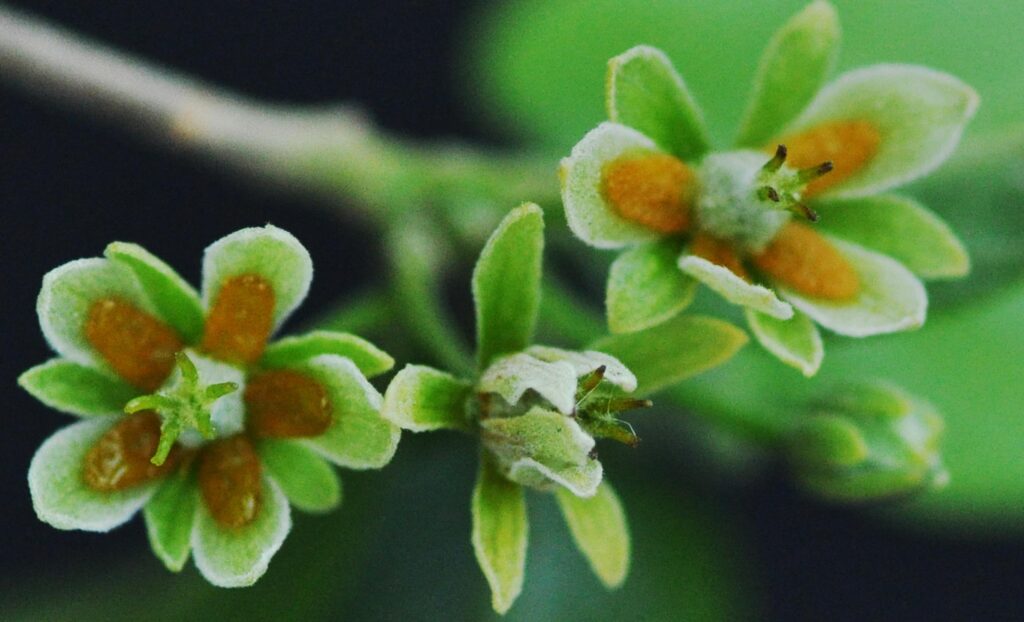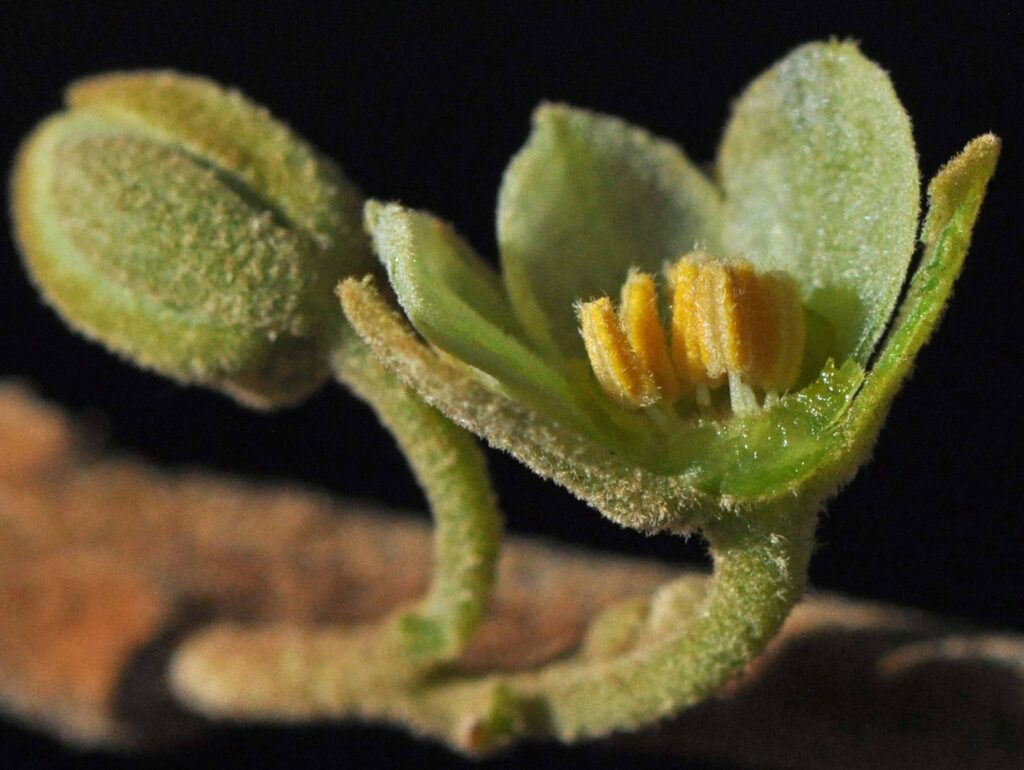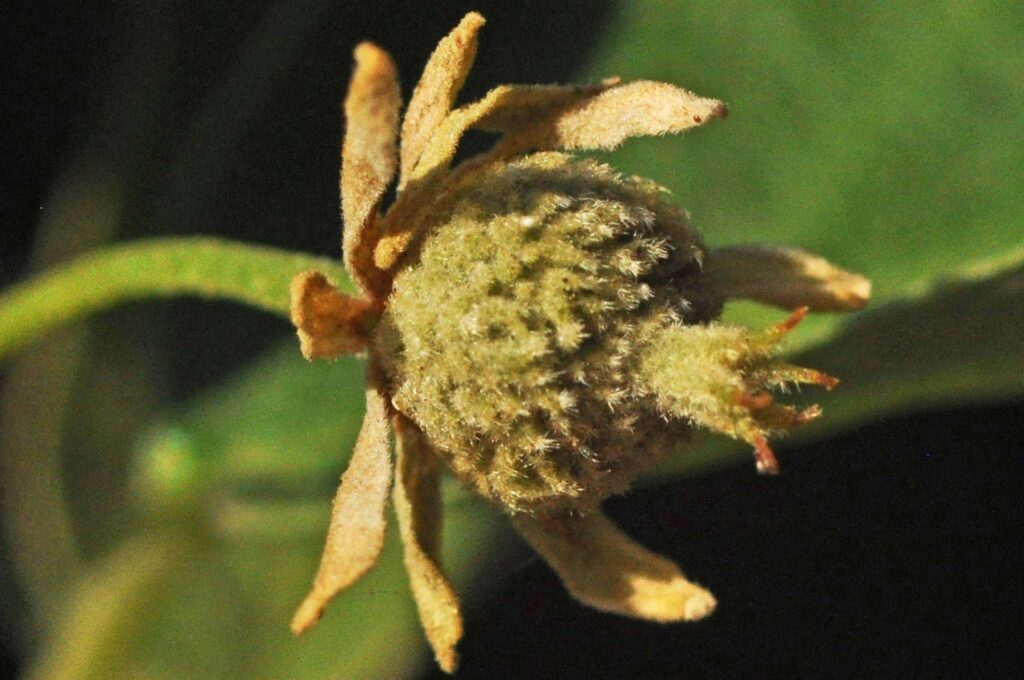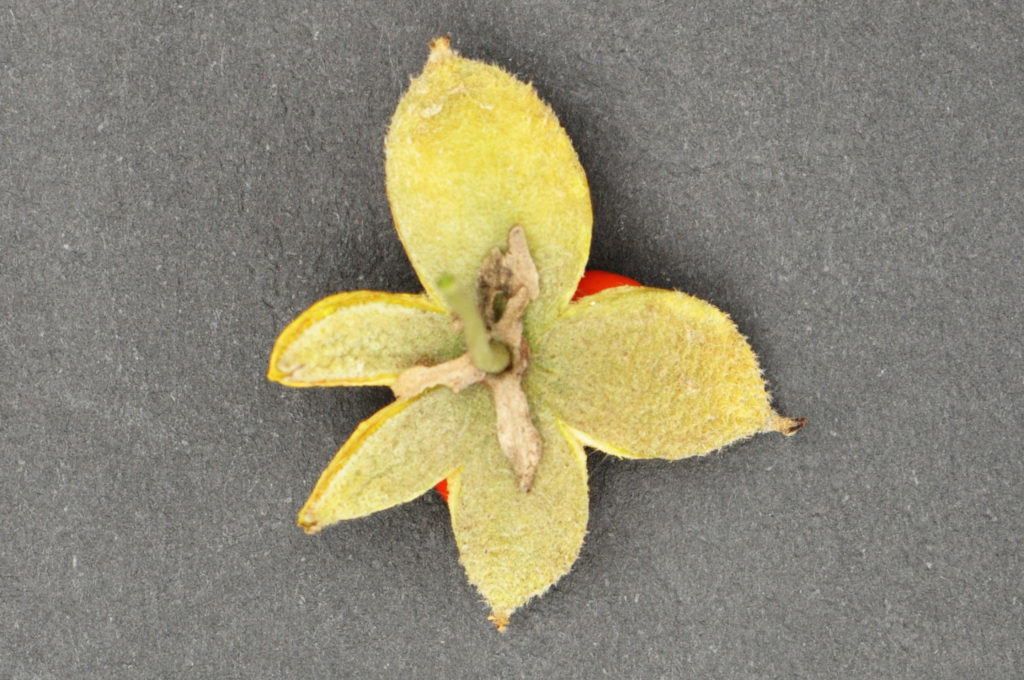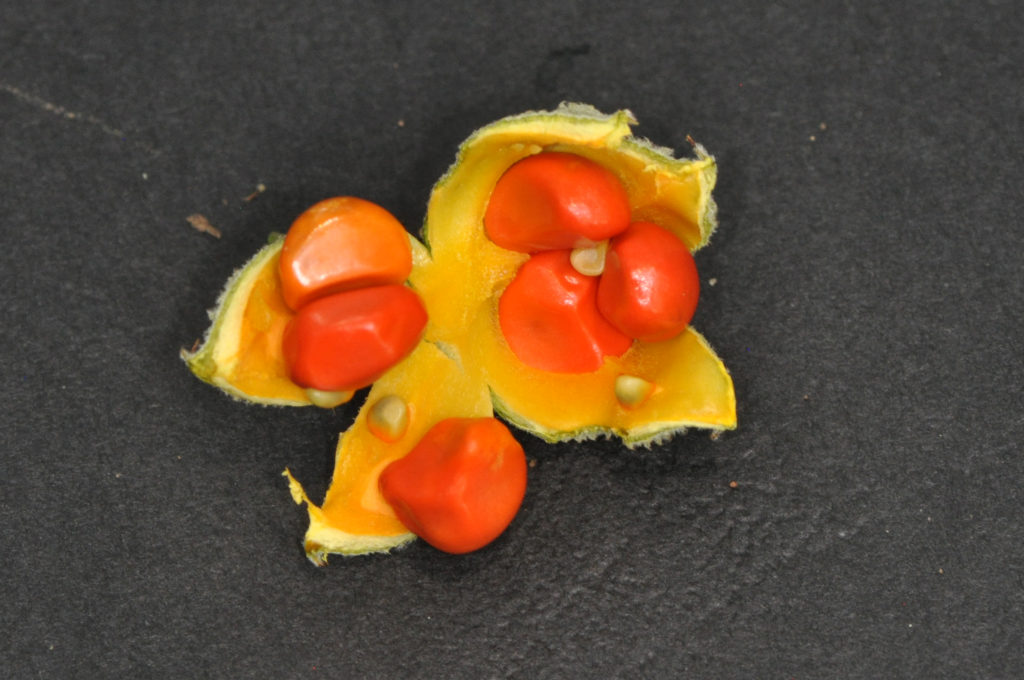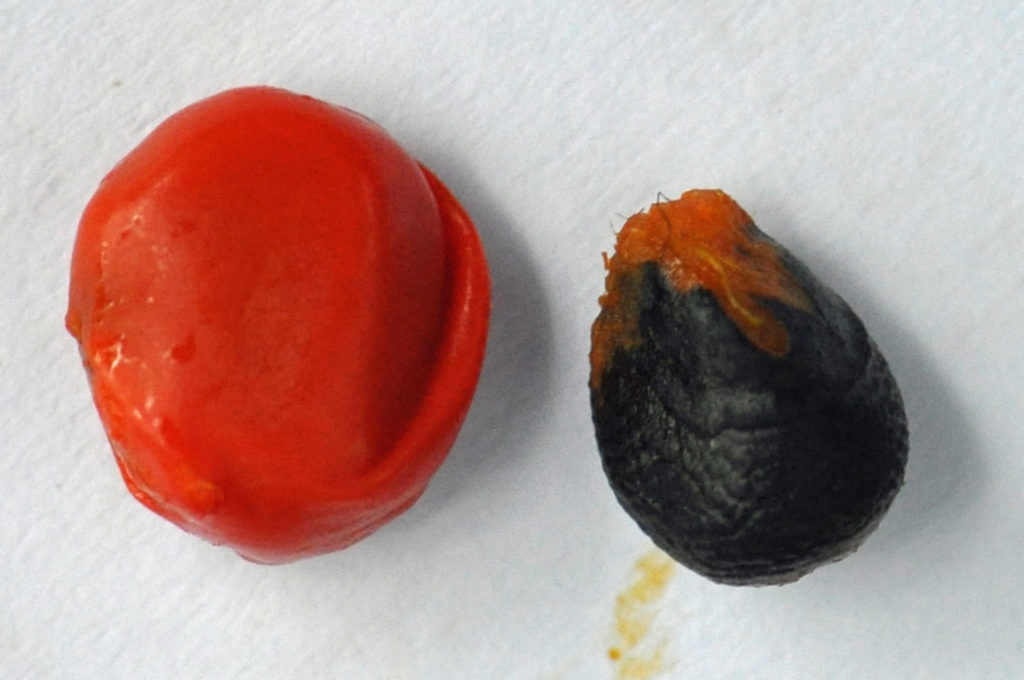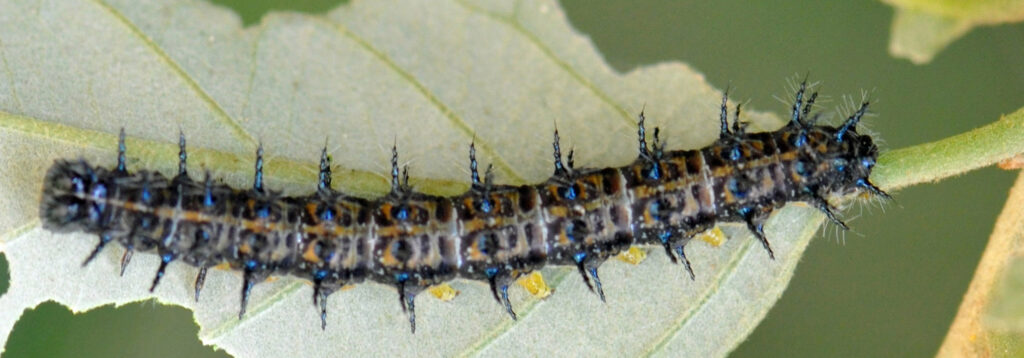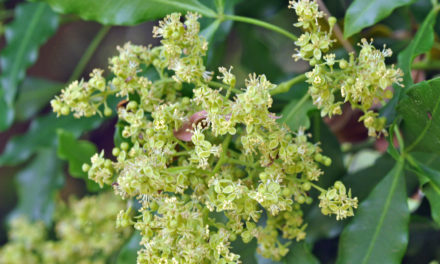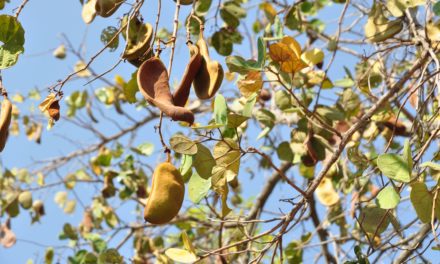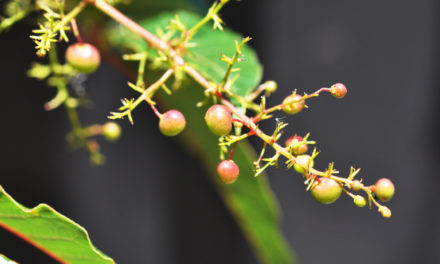General Info – summary
This unarmed dioecious shrub/Tree has grey smooth bark and is up to 2om high. It is widespread in South Africa. Simple, leathery Leaves lack stipules and domatia may be present. Small 5-merous, unisexual, regular Flowers on pedicels. Stamens + short filaments. Single pistil ends with 5 stigmas. The almost spherical Fruit is a stalked capsule, with black seeds, impressively covered by a reddish oily coat.
Description
Kiggelaria africana
Previous Names: Kiggelaria dregeana, Kiggelaria ferruginea, Kiggelaria flavo-velutina, Kiggelaria glabrate, Kiggelaria grandiflora.
SA Tree No. 494.
Common names: (Afr) Kershout, Mahogany, Rooispeekboom, Rooispeekhout, Rooispekboom, Rooispekhout, Speekboom, Speekhout, Spekboom, Spekhout, Vaderlandsrooihout, Wildeperske, Witstinkhout, Wittestinkhout. (Eng) Fatherlands Redwood, Natal Mahogany, Pink-wood, Porkwood, Red Ebony, Red Ivory, Red Ivory Wood, Royal Redwood, Spokewood, Wild Peach. (isiXhosa) Idungamuzi, Ingcondo, Umduma, Umhlandela, Umhlizinyathi, Umkhokohkho, Umkokoko, Umluvuluvu, Umngcondo, Umofumofu, Umvethi. (isiZulu) Imfeyenkomo, Isikali, Isiklalku, Isiklalu, Umhlabahlungulu, Umunwe, Usahlulamanye. (Northern Sotho) Monêpênêpê, Mphatha-silo. (Setswana) Lekgatsi, Lekhatsi. (siSwati) Siklalu. (Tshivenda) Mufhatapvhufa, Mufhata-vhufa.
Family: Achariaceae: This mainly tropical family consists of 32-33 genera and 150 species. Genera with trees on this website include Kiggelaria and Rawsonia. These plants usually possess cyanogenic glycosides and are mainly shrubs and trees. Most genera and species are found in tropical Africa and Asia. Leaves are simple and alternate. Leaf petiole has a thickened base and apex. Flowers usually have 6-12 petals. A disc absent. Anthers are longitudinally dehiscent. Gynoecium has a single pistil with a superior ovary and parietal placentation.
Name derivation: Kiggelaria – named after Franz Kiggelaar who was the curator of the Simon Von Beaumonts garden in The Hague (1648 – 1722). africana – from Africa. This is the only species in this genus in southern Africa.
Conservation: National Status: L C. (Least Concern). Assessed: 2005 (W. Foden and L. Potter).
Tree
Environmental factors determine whether this unarmed Tree (photo 52) will reach a maximum of 22m high (usually up to 13m) or become multi-stemmed low branching shrub. The Bark is pale grey, smooth (photo 339), darkening and becoming brown, rough, flaky and fissured (photo 117). Young low branches are yellowish brown, striated or grooved and hairy.
- 52. 2018/03/14. Pretoria NBG. Photo: David Becking.
- 339 2014/06/24 Walter Sisulu NBG. Photo: David Becking.
- 177. 2014/10/07. Walter Sisulu NBG. Photo: David Becking.
Leaves
The spirally or alternatively arranged Leaves on this usually evergreen plant are simple (have a single blade which may have incisions that are not deep enough to divide the blade into leaflets – photos 83 & 22). An occasional bright yellow leaf may be seen (photo 885). Leaves are oval, oblong, elliptic or even lance-shaped. They are up to 11 x 5cm – usually smaller. The Blade is slightly leathery and may be smooth or have soft yellowish or grey hairs. Young leaves are hairy on both sides (photo 117). On the Upper surface, the leaves are a fresh grey-green, yellow-green or dark green. With time, some hairs are lost. In mature leaves the Lower surface may be hairy. It may be lighter, blue green, yellowish (photo 22) or whitish colour. The yellowish or reddish-velvety Veins are sunken above and protrude below. Lateral veins curve towards the apex but do not reach the margin. This is more visible when the leaf is viewed against a strong light (photo 165). Here some net veins are almost ladder-like. The Apex may be pointed or rounded. The Base is rounded or narrow (photo 22). Margins are slightly wavy (photo 885) and entire (with a continuous margin, not in any way indented) or faintly serrated. If small uneven teeth are present, they are usually spaced apart. This may occur on young and coppice (when stems are cut or burned it causes regrowth from the stump or roots) growth. The yellowish Petiole (leaf stalk) is up to 1,3cm long (photo 22) and Stipules (basal appendages of the petiole) are absent. Domatia are tiny chambers produced by plants to house tiny arthropods. To the naked eye, they appear as small bumps and may be present in the in principal leaf axils of the lateral veins (photo 22). When present, domatia may be fringed with hairs, which are more common in juvenile or coppice leaves.
- 83. 2014/09/30. Walter Sisulu NBG. Photo: David Becking.
- 885. 2018/03/01. Pretoria NBG. Photo: David Becking.
- 117. 2017/12/26. Pretoria NBG. Photo: David Becking.
- 22. 2015/01/27. Walter Sisulu NBG. Photo: David Becking.
- 165. 2021/10/19. Walter Sisulu NBG. Photo: David Becking.
Flowers
These trees are dioecious (unisexual flowers with male and female on different trees) and each flower is about 1cm in diameter. The small, bell shaped, pale yellow to greenish white Flowers are actinomorphic (Regular, symmetrical. Flowers are vertically divisible into similar halves by more than 1 plane passing through the axis). The 5 uneven Sepals are almost free (photo 731). There are 5 Petals, each with a small, slightly fleshy scale attached to the base (photo 725). All flowers have slender Pedicels (stalks of a single flower – photo 351). The Male Flowers tend to droop and the 3-7 flowers are in axillary Cymes (a broad, more or less flat-topped, determinate flower cluster, with central flowers opening first). The hairy 8-10 free Stamens have short Filaments (photo 351). Their Anthers have 2 pollen sacs that open via terminal pores. Here the ovary is absent. The Female Flowers are solitary, on slender hairy pedicels about 1,5cm long and develop from leaf axils. There is a single Pistil (a unit of the Gynoecium, the female element of the flower, composed of the Ovary, Style and Stigma). The sessile, superior Ovary is pubescent (with dense fine, short, soft hairs – downy). The short, thick Style is divided into 5 branches (photo 725). (Aug-Jan).
- 731 2017/09/06. Walter Sisulu NBG. Photo: David Becking.
- 725. 2017/09/06. Walter Sisulu NBG. Photo: David Becking.
- 351. 2018/10/05. Pretoria NBG. Photo: David Becking (dissected).
Fruit
The almost spherical, knobbly, olive green and hairy Fruit is a distinctive Capsule (a dry fruit resulting from the maturing of a compound ovary with more than 1 carpel). It is up to 2cm wide and perched on a hairy Pedicel (stalk of a single flower – photo 868). Initially the remains of the perianth are visible at the Base (photo 868). The capsule becomes hard and warty. In photo 868 the remains of the 5 styles at the Apex are also visible. The fruit is greyish green when ripe. The surface is rough and splits into 4 or 5 valves (separable parts of a pod; the units or pieces into which a capsule splits or divides in dehiscing). This splitting reveals an impressive orange to red, oily coat that completely covers each of the 7mm wide seeds (photo 19). Removal of the oily coat reveals the black Seed (photo 23). Each seed is about 0,7cm in diameter. The Testa (seed coat) is slightly woody. The 2 cotyledons (seed leaf; primary leaf or leaves in the embryo) are flat and the endosperm (the starch and oil-containing tissue of many seeds; often referred to as the albumen) is fleshy. (Jan-July).
- 868. 2017/11/14. Pretoria NBG. Photo: David Becking.
- 888. 2015/01/20. Walter Sisulu NBG. Photo: David Becking.
- 19. 2015/01/27. Walter Sisulu NBG. Photo: David Becking.
- 23 2015/01/27 .Walter Sisulu NBG. Photo: David Becking.
Distribution & Ecology
This tree is widely distributed within South Africa in very different habitats. In a forest, these Trees are limited to the moister valleys, kloofs and gullies in the eastern and south eastern regions of the country. They are present but less common in inland plateaux and montane grasslands. Here they tolerate mild frost and in South Africa they grow from sea level to about 2 100m but are more common above 1 000m. These plants are located in all provinces in South Africa (relatively few in the Northern Cape). This distribution gives an idea of the tree adaptability. They are also found in the valleys in Lesotho, (1 of about 34 of their indigenous tree species) and in Namibia, Uganda, Kenya and Tanzania – where they are common round the base of Mt Kilimanjaro (5 895m). The northern limits of this African species is Kenya. Birds. The Crowned Hornbill, Cape rock thrush, Cape White-eye and the Olive Woodpecker consume the red oily seed covering. Mousebirds eat the black seeds. Other birds including Cuckoos are attracted to the Butterfly larvae. These butterflies include the Garden Acraea Acraea horta (photo of larva below) which has transparent wings and lays its eggs on the leaves and the developing larvae feed on the leaves. The adult upper wing ends are translucent. This and Acraea igola larvae may almost defoliate the tree. Another butterfly that has larvae that feed on Kiggelaria africana is the Battling Glider Cymothoe alcimeda. It is commonly found along forest edges and mountains. Flies may pollinate flowers.
- 161. 2014/12/02. Walter Sisulu NBG. Photo: David Becking. + Acraea horta.
Ethnobotany
Propagation is by seeds or cuttings. Seeds germinate well and the plant flowers after 2-3 years. Both sexes are required if fruit is required. Here cuttings from male and female plants will ensure this. The tree is relatively quick growing. Roots are non-invasive. The Wood is fairly hard. It produces a pink timber that is suitable for making boards, implements and furniture. The Bark yields a pink-red dye. Some people believe that the tree attracts lightning and yet others use it to protect their homes. Trees are planted for windbreaks and to attract birds. Young plants initially need some frost protection. Hydrocyanic acid has been found in the leaves.
References
Boon, R. 2010. Pooley’s Trees of eastern South Africa. Flora and Fauna Publications Trust, Durban.
Burrows, J.E., Burrows, S.M., Lotter, M.C. & Schmidt, E. 2018. Trees and Shrubs Mozambique. Publishing Print Matters (Pty) Ltd. Noordhoek, Cape Town.
Coates Palgrave, M. 2002. Keith Coates Palgrave Trees of Southern Africa. edn 3. Struik, Cape Town.
Foden, W. & Potter, L. 2005. Kiggelaria africana L. National Assessment: Red List of South African Plants version 2020.1. Accessed on 2023/08/07.
Ginn, P. J, McIlleron, W.G, & Mimstein, P. le S. 1991. The Complete Book of South African Birds. Struik, Cape Town/Singapore.
Lawrence, G. H. M, 1951. Taxonomy of Vascular Plants. The Macmillan Company, New York. Tenth Printing 1965.
Palmer, E. & Pitman, N. 1972. Trees of southern Africa. Balkema, Amsterdam, Cape Town.
Schmidt, S. Lotter, M. & McCleland, W. 2002. Trees and Shrubs of Mpumalanga and the Kruger National Park. Jacana, Johannesburg.
van Wyk, B. & van Wyk, P. 1997 Field guide to Trees of Southern Africa. Struik, Cape Town.
Woodhall, S. 2020. Field Guide to Butterflies of South Africa, edn 2. Donnelley, RR, China.
http://plantzafrica.com/plantklm/kiggelarafric.htm
https://en.wikipedia.org/wiki/Kiggelaria_africana
http://www.bronberger.co.za/index.php?option=com_content&view=article&id=1954:die-boom-wat-skoenlapper-larwes-laat-oorleef&catid=59:ons-omgewing&Itemid=97

